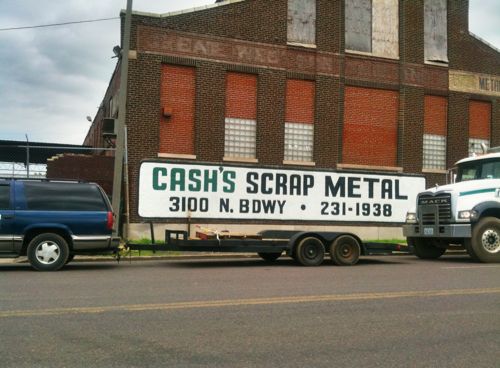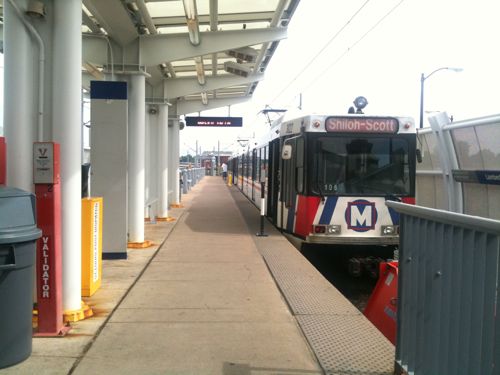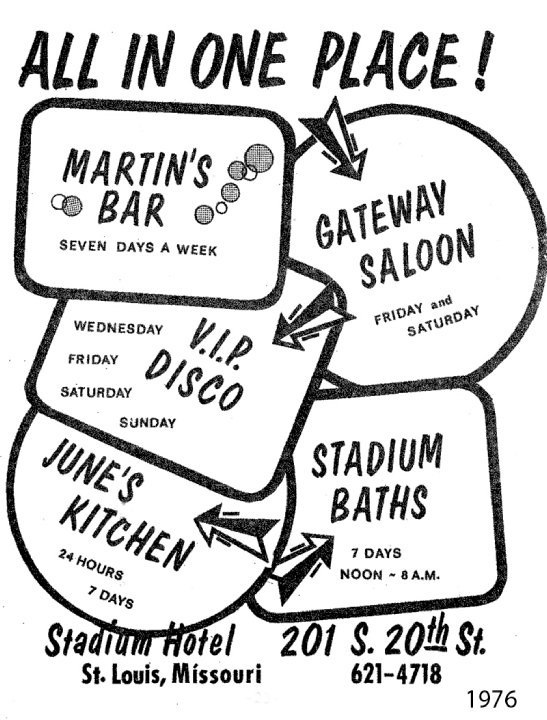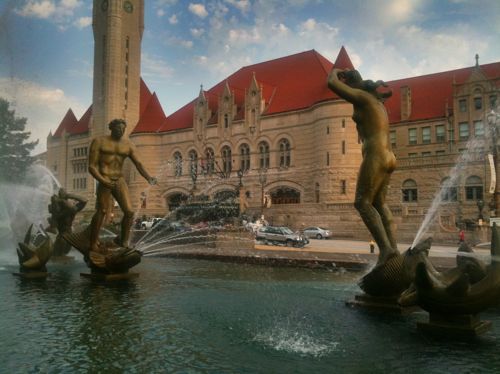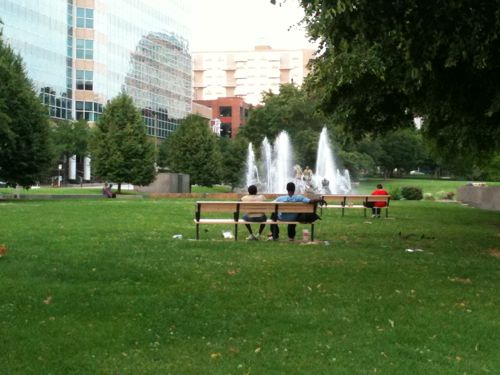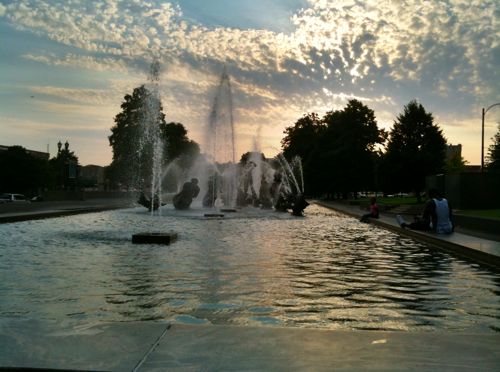Pros & Cons of Saving the 1960s Flying Saucer at Grand & Forest Park
|
|
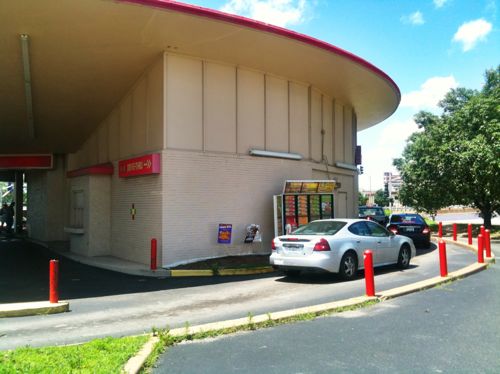
Uh oh, the modern preservationists are gearing up to try to save another interesting, but highly anti-pedestrian, building. Â Yes, the fight is on the save a gas station turned drive-thru taco stand at 212 S. Grand. Â With a few exceptions, commercial modernism translates to brutal and outright hostile to pedestrians but lovingly embracing all in single occupant vehicles.
Developer Rick Yackey plans to demolish the distinctive flying-saucer-shaped Del Taco at N. Grand and Forest Park Parkway, near St. Louis University, and replace it with new retail buildings, a city development official said Tuesday.
The St. Louis Land Clearance Redevelopment Authority approved a blighting and redevelopment plan for the building, which was built to be a Phillips 66 gas station. The plan, said LCRA staffer Dale Ruthsatz, is to knock down the Del Taco replace it with a more pedestrian-oriented retail building of 3,500 to 7,000 square feet. (STLtoday.com)
The Del Taco at the SE corner of Grand & Forest Park, is not one of the few exceptions.
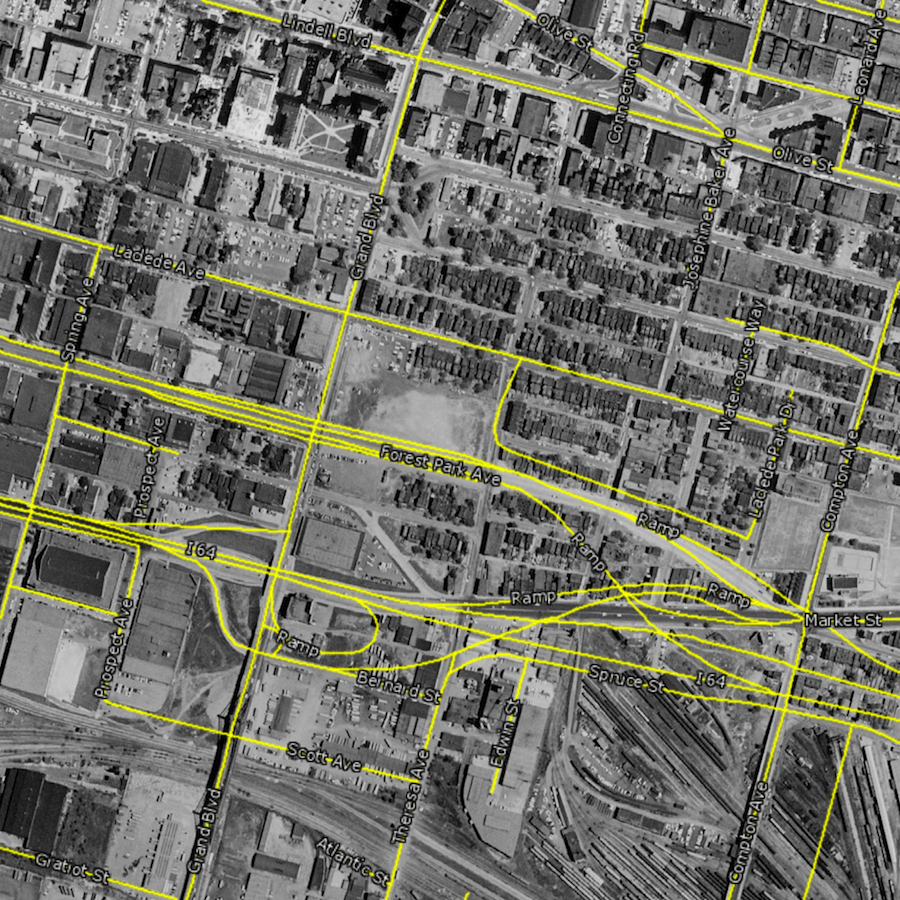
You can see from the above photo that razing of buildings in the Mill Creek Valley began at Grand Ave & Forest Park by 1958. Grand Ave had the #70 streetcar starting in 1895 so the length from North to South was very active and designed for pedestrians. Â It was the modernists that actively destroyed the pedestrian-friendly city to usher in the auto-friendly city. Why do people want to save that which destroyed the city?
Granted, I love many modern buildings. Â Their simple forms, the absence of applied decoration, the use of materials other than red brick, all make forms often pleasing to my eye. Â My favorite architect is Bruce Goff (1904-1982), but thankfully the bulk of his work was on private residences. Like his contemporaries, his (unbuilt) commercial projects were an assault on the pedestrian: non-active walls, large setbacks, etc.
When I read  developer Rick Yackey wants to construct “a more pedestrian-oriented retail building” I thought of several things:
- More pedestrian-friendly anything is needed around the Saint Louis University campus. You’d think the university has only been around 5 years judging by the adjacent activity level.
- It doesn’t take much to be more pedestrian-friendly than the existing Del Taco.
- The developer had the opportunity to make the adjacent Council Plaza building more pedestrian-friendly during a recent renovation project but instead the situation is worse, something I didn’t think was possible.
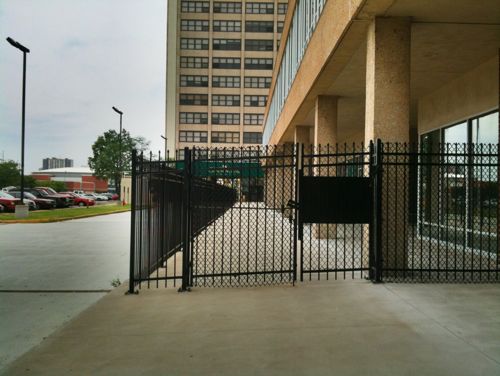
Based on the developer’s record with Council Plaza I have little confidence any replacement would be pedestrian-friendly. Before removing a highly unique building I’d like to see controls in place to ensure the 9 acre site becomes pedestrian-friendly. Â Saying a project will be pedestrian-friendly and actually delivering a pedestrian-friendly completed project are
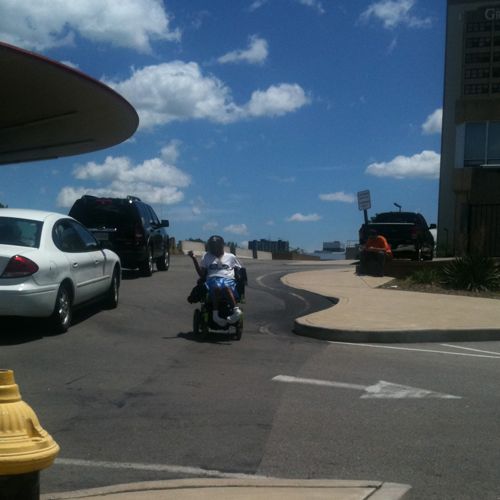
I like the Del Taco building, it makes me smile when I’m in my car driving by or even at the drive-thru window but the entire nine acre Council Plaza site makes me furious as a pedestrian. Â It should be noted that the unfriendly site planning that exists can change without altering the historic composition of buildings. We can improve the walkability and accessibility while leaving the buildings intact.
I won’t lose any sleep if the Del Taco is razed but I will be mad as hell if some generic anti-pedestrian strip mall is built in it’s place. We do have a unique collection of five buildings that are listed on the National Register of Historic Places.
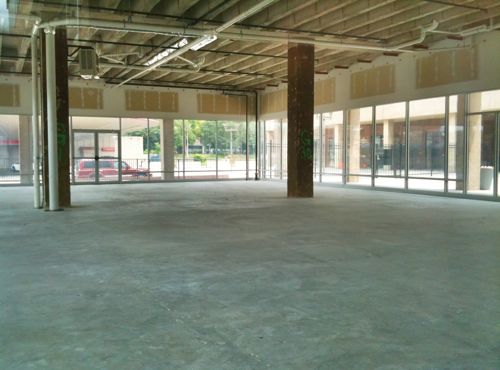
But hey the developer needs retail space, that’s important too, right? But if the demand is so great why is every retail space in the renovated Plaza Council building vacant?
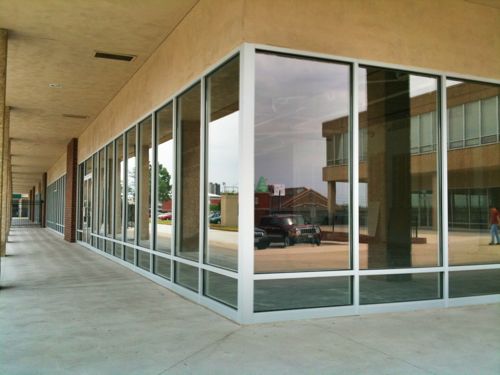
I can picture the Del Taco structure gone, replaced with a high-design modernist structure to compliment the other buildings. But I don’t think that’s what we’ll get. Â Instead I picture a generic strip mall not connected to the public sidewalk on Grand or to other buildings on the site. The loss of such a great building can only be offset with a great building. Show me the designs, with proof it will be pedestrian-friendly, and I’m willing to listen. Until then not a chance!
If I were developing this site I’d use the Del Taco building as a draw. Renovate the building and accenting it with great lighting, new pedestrian-friendly site design connecting to a new structure to the east on the existing surface parking lot. I can see the building not as a fast food joint but as a pub with a focus on great outdoor patio seating. This could become THE corner where SLU students hang out.
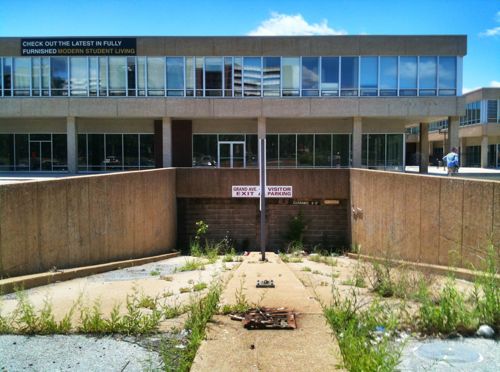
Most developers would kill to have such a widely known building to attract customers to their development! Â Certainly the 24 hour drive-thru is nice after you leave the bar but let’s face it, the use of the building can easily change. Â Thousands on Facebook want to save the building, although some want to also save the fast food chain currently operating within the building. An online petition has been started as well to save the building.
Razing this building makes zero sense no matter how you try to look at it, believe me I tried! Â Board Bill 188 (redevelopment bill) has been assigned to the Housing, Urban Development & Zoning committee. I’m sure all 12 committee members would love to hear from citizens via email, fax, text, twitter or phone prior to the hearing at 10am Wednesday morning.
– Steve Patterson
